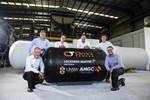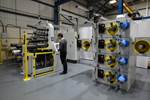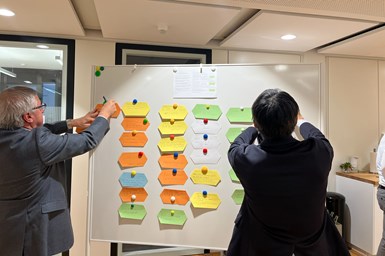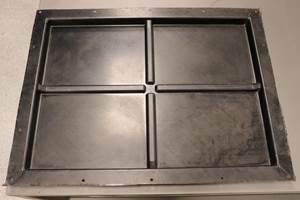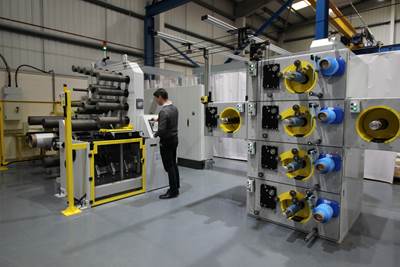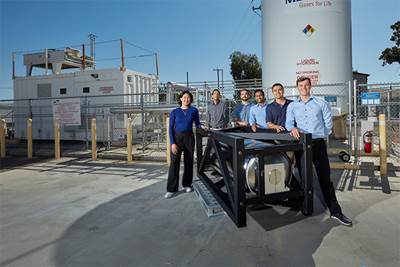AZL collaborative project to redefine hydrogen tank development
Kick-off meeting sparks comprehensive discussions on materials, manufacturing and design, setting the stage for composite-based hydrogen vessel solutions.
Share
Read Next
The kick-off meeting for the “Trends and Design Factors for Hydrogen Pressure Vessels” project that began November 2023, held at AZL Aachen GmbH (Aachen, Germany), was a successful event, bringing together more than 37 top experts in the field of composites technologies. It laid a solid foundation for the joint partner project, which currently comprises a consortium of 20 companies from across the composite pressure vessel value chain (see the list of companies below).
AZL’s joint partner project approach aims to provide technology and market insights as well as benchmarking of different material and production setups in combination with connecting experts along the value chain.
The kick-off meeting not only served as a platform to foster new contacts and get informed about the expertise and interests of the consortium members, but also laid the groundwork for steering the focus of the upcoming project’s phases. As a basis for the interactive discussion session, AZL outlined the background, motivation and detailed work plan. This included detailing primary objectives, pressing challenges, the contribution to competitiveness and priorities that would best meet the expectations of project partners.
Discussions also covered regulatory issues, the evolving value chain, and the supply and properties of key materials such as carbon and glass fibers and resins. The consortium defined investigations into different manufacturing technologies, assessing their maturity and potential benefits. Design layouts, including liners, boss designs and winding patterns, were thoroughly considered, taking into account their implications for mobile and
stationary storage. The consortium also expressed interest in cost-effective testing methods and certification processes, as well as the prospects for recycling continuous fibers and the use of sustainable materials. Insight was
requested concerning the future demand for hydrogen tanks, OEM needs and strategies and technological developments to produce more economical tanks.
In particular, the meeting highlighted the importance of CAE designs for fiber patterns, software suitability and the application-dependent use of thermoset and thermoplastic designs.
“The richness of the discussion outcomes demonstrates the comprehensive approach of our project and the value it should bring to participants,” Warden Schijve, design leader at AZL, says. “We are eager to integrate these findings into the detailed planning of the project, with the first report meeting scheduled for Feb. 7, 2024. Within this meeting, we will provide a
comprehensive review of state of the art applications, design considerations and production technologies.”
The first report meeting will also set the stage of the next project phase, which will be the creation of reference designs by AZL’s engineering team. These designs will cover a range of pressure vessel configurations using
a variety of materials and production concepts. The aim is to develop models that not only reflect current technological capabilities, but also provide deep insight into the cost analysis of different production technologies, their CO2 footprint, recycling aspects and scalability.
AZL’s project remains open to additional participants. Companies interested in joining this initiative are invited to contact Philipp Fröhlig (philipp.froehlig@azl aachen gmbh.de) for further information and to explore how they can contribute to and benefit from this hydrogen project
This post is courtesy of the CompositesWorld and AZL Aachen GmbH media partnership.
Related Content
JEC World 2023 highlights: Innovative prepregs, bio-resins, automation, business development
CW’s Jeff Sloan checks in with JEC innovations from Solvay, A&P, Nikkiso, Voith, Hexcel, KraussMaffei, FILL, Web Industries, Sicomin, Bakelite Synthetics, Westlake Epoxy and Reliance Industries.
Read MoreUniFORM: High-quality, high-complex EV battery enclosures at low cycle times, low tooling costs
Stellantis subsidiary CpK Interior Products Inc. recently completed a design challenge to prove out its vacuum-assisted wet compression molding process for CFRP battery trays.
Read MoreRecycling end-of-life composite parts: New methods, markets
From infrastructure solutions to consumer products, Polish recycler Anmet and Netherlands-based researchers are developing new methods for repurposing wind turbine blades and other composite parts.
Read MoreParis Air Show 2023 highlights
The Paris Air Show, one of the largest aerospace trade shows in the world, returned for the first time since 2019 and proved that the global aviation industry industry is very much alive and kicking.
Read MoreRead Next
Omni Tanker, Lockheed Martin complete composite hydrogen storage tank project
The collaborative project includes Type IV and Type V tank demonstrators for storing and transporting cryogenic and liquid hydrogen, helium and more.
Read MoreManufacturing tech for scalable Type V hydrogen tank fabrication, CFRP lifecycle management
Cygnet Texkimp’s Multi Roll Stack and composite recycling technology catalyze ASCEND program’s mission to optimize aerospace, automotive hydrogen storage and CFRP sustainability.
Read MoreVerne, Lawrence Livermore demonstrate CcH2 system for heavy-duty transportation
Testing indicates that Verne and Lawrence Livermore National Laboratory have tripled previous records for cryo-compressed hydrogen storage, developing a CcH2 system large enough to meet the energy storage needs of semi-trucks.
Read More

